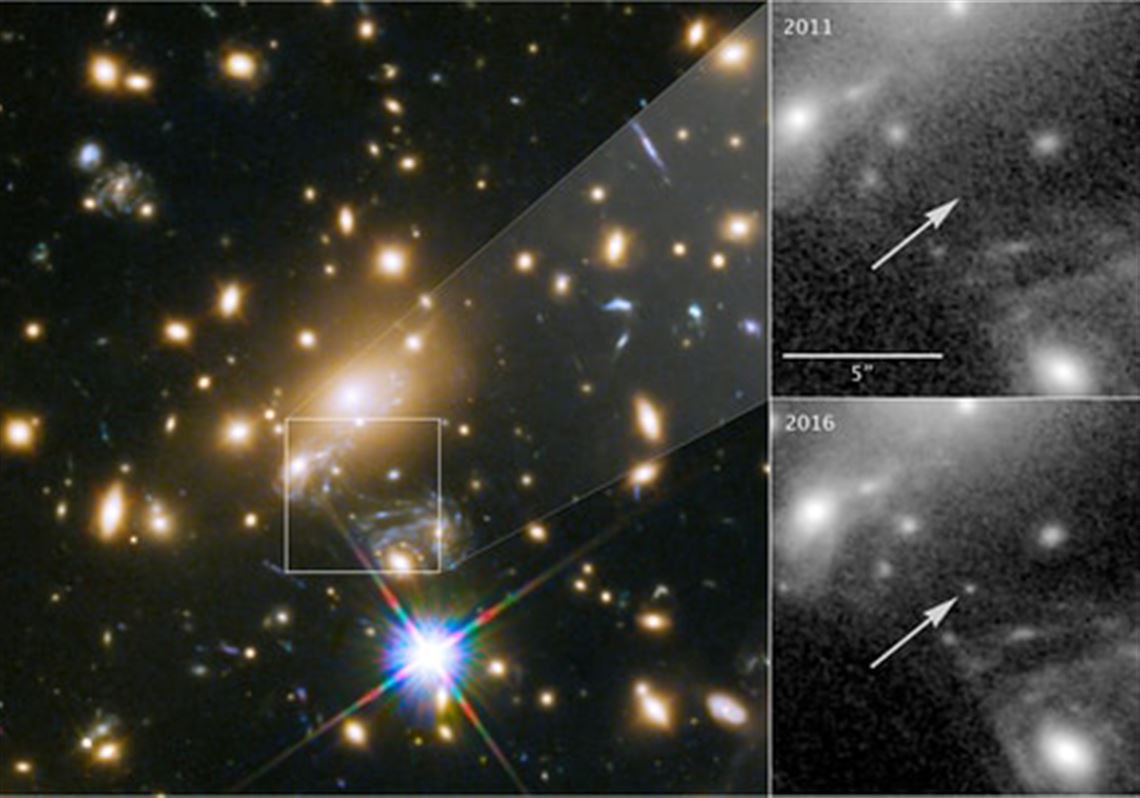Astronomers using the Hubble Space Telescope have found the farthest star ever observed, a bright dot 9 billion light-years away. Forget thanking their lucky stars: This discovery required the fortuitous alignment of a massive galactic cluster. The cluster warped the starlight, bending it toward Earth while magnifying the star 2,000 times.
Officially, the star’s name is MACS J1149+2223 Lensed Star 1. But the astronomers call it Icarus. Icarus was a hundredfold more distant than any other lone star previously detected, according to Patrick Kelly, an astrophysicist at the University of Minnesota. Normally only phenomena like supernovas - catastrophic stellar explosions - or entire galaxies are detectable at such vast distances.
Mr. Kelly had not set out to spy on record-breaking stars. No other individual star had been seen in such a distance. The astrophysicist and his colleagues were studying Hubble images of a supernova called SN Refsdal. But in 2016, they found a blip that appeared in the same galaxy that housed the supernova. This blip, as Mr. Kelly and his co-authors wrote in a report published recently in the journal Nature Astronomy, was not another supernova but a blue supergiant star.
About halfway between Icarus’s spiral galaxy and our own was a third object, a massive cluster of galaxies that acted as the lens of the magnifying glass. It just so happened that Icarus passed “along the critical curve” of the cluster, Mr. Kelly said, which warped the starlight in our direction - a process called gravitational lensing. The effect was like “a natural telescope, much more powerful than anything we could build.”
The authors of the new study identified Icarus as a stable star and not an explosion because its temperature did not appear to fluctuate. Supernovas “start out very hot and cool down. We saw no evidence of a change in temperature,” Mr. Kelly said. Still, Icarus was massive, hotter than the Sun, and possibly thousands of times as luminous.
It also no longer exists, Mr. Kelly said. Blue supergiant stars do not have life spans of nine billion years. He suspected Icarus either collapsed into a black hole or wound up as a neutron star.
Icarus burned bright and early. The universe is 13.8 billion years old; to view Icarus’s starlight is to look back through three-quarters of the universe’s age. If astrophysicists look sufficiently deep enough, Mr. Kelly said, they should be able to learn about some of the universe’s first stars. Mr. Kelly said this technique, coupling nature’s magnifying glass with future machines like the James Webb Telescope, could yield additional discoveries - stars older and more distant, even, than Icarus.
First Published: April 8, 2018, 8:00 a.m.















